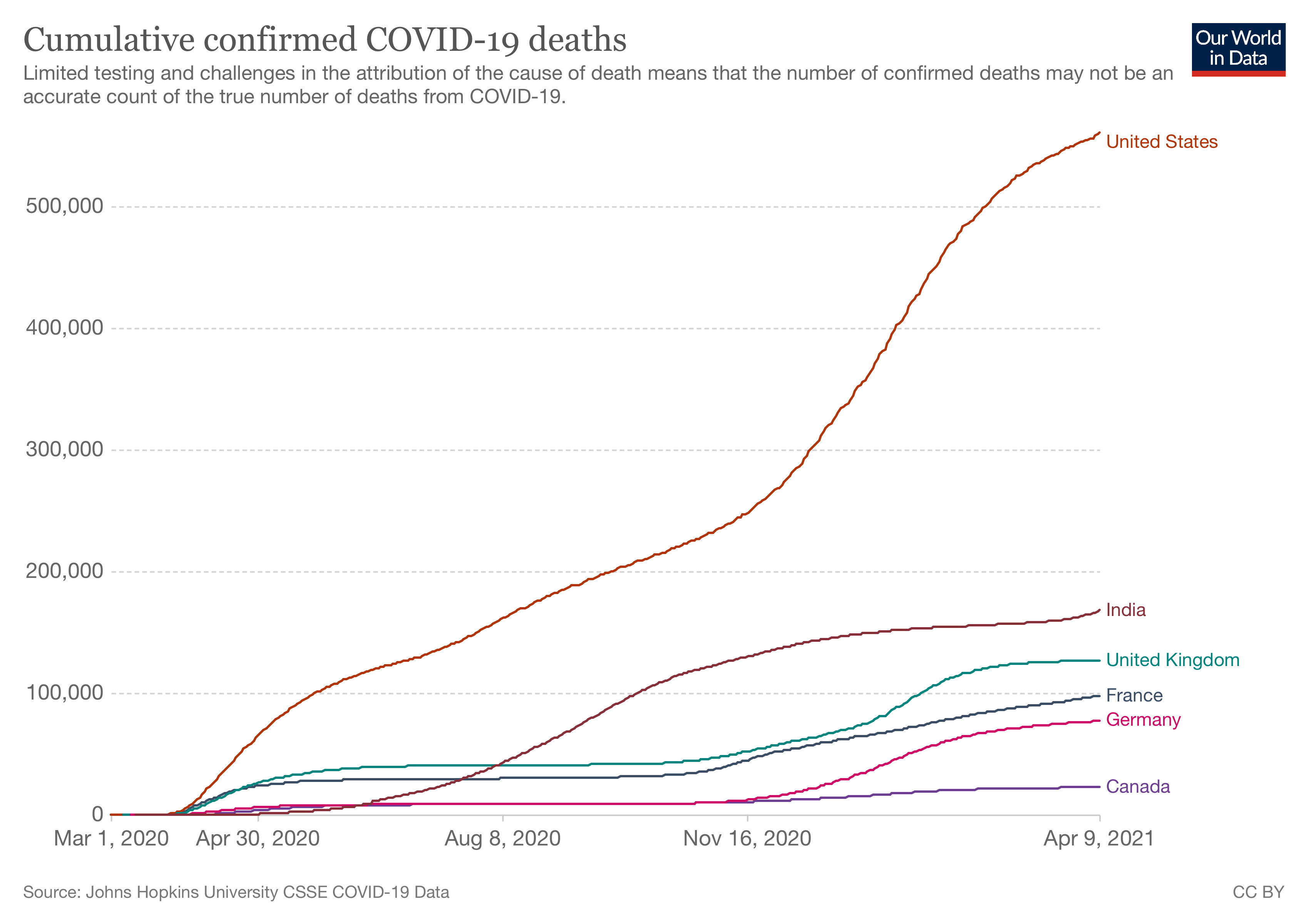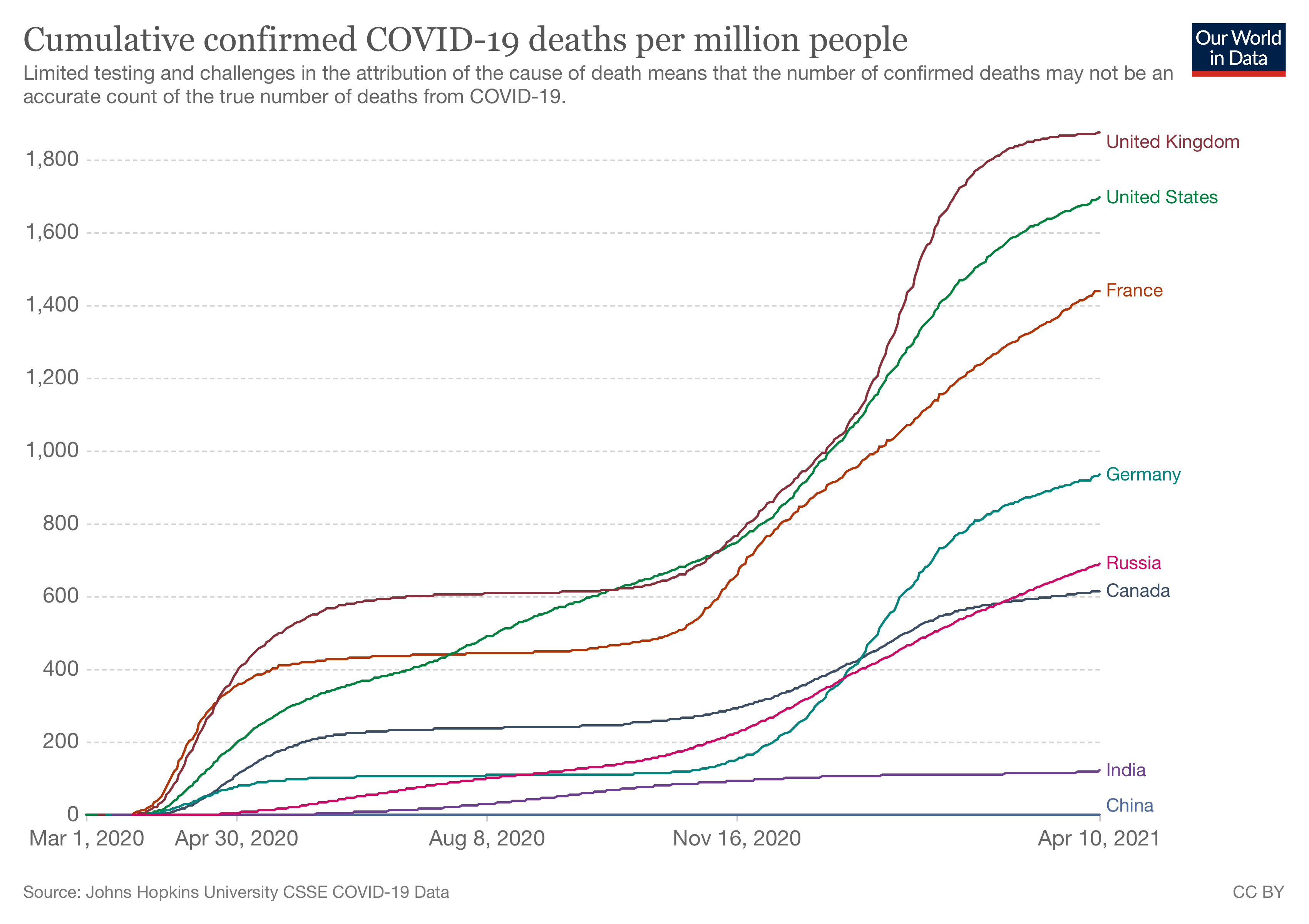Some Perspective on COVID 19’s Impact
Embedded in out historical mindset was the toll taken by the influenza pandemic of 1918-1919. Estimates of the deaths caused by that pandemic hover around 50 million worldwide, and 675,00 in the US; it’s too early to have really accurate data, but there are currently estimated to be about 3 million confirmed COVID deaths worldwide and some 560,000 in the U.S. The American population was lower in the 1918 pandemic, and there was a much higher mortality among infants and young adults than that seen with SARS-CoV-2. Fortunately, we have much better medical care today with the widespread availability of supplemental oxygen, therapeutic intubation, ventilators, ECMO, pressors, etc., not to mention the incredibly rapid development and manufacture of highly effective vaccines. One can only speculate what the mortality rate for COVID might be if supportive medical care had remained in its early 20th century state. Of course, the national approach to public health measures also matters a great deal, and it’s evident that the U.S. could have done better.

Cumulative confirmed COVID-19 deaths

Cumulative COVID deaths per million

